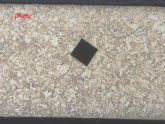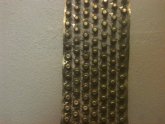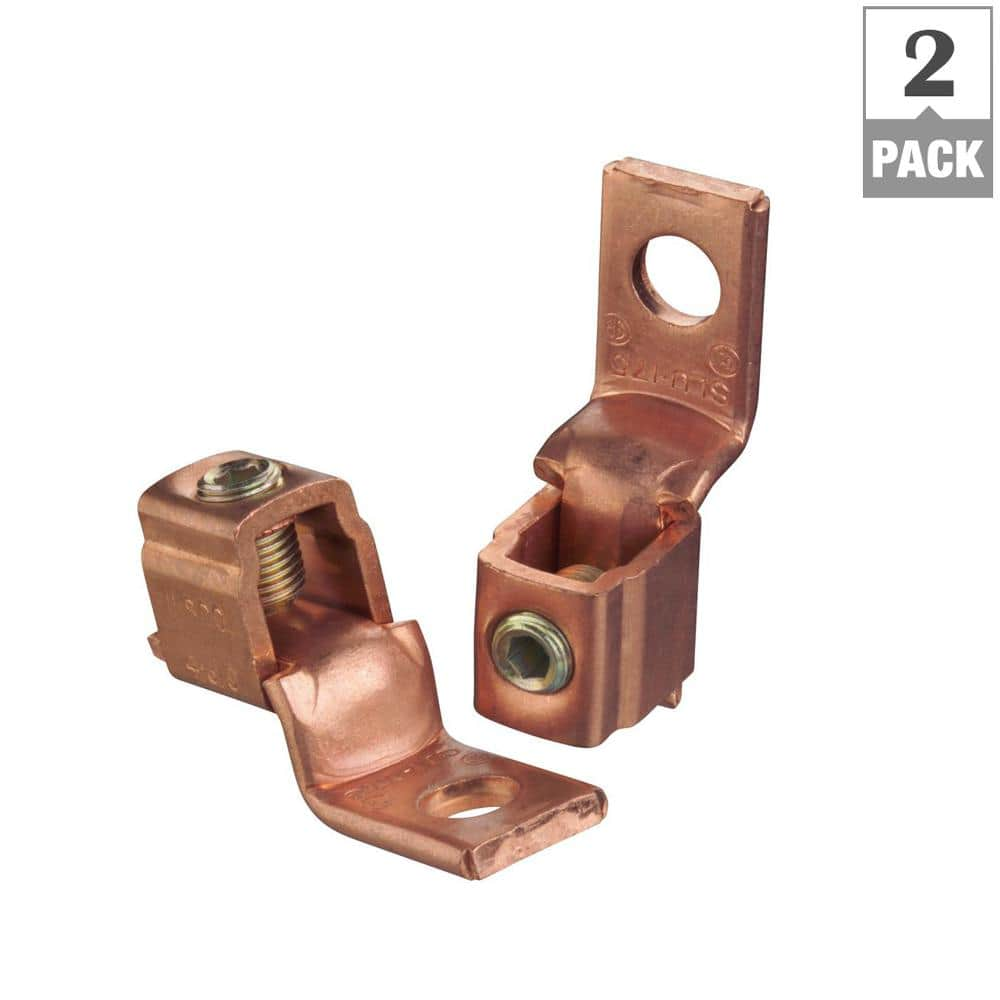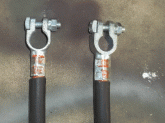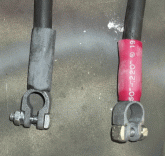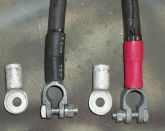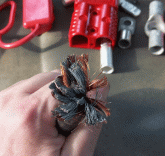Sorry everyone, I got this going...
Proper Tin coated MARINE grade wire is hateful expensive,
Each strand in the bundle is 'Tin' coated, usually copper conductor material.
The strands, no matter how small have to be cleaned, then they are run though a vat of tin heated to liquid.
It's really interesting to watch, but the time, energy, tin & equipment drive the price up.
I've only specified Marine Grade tined wire in salt mines & salt water applications.
Marine Grade should be a hint...
-------
'TINNING' as a MEANS OF PROTECTING EXPOSED BARE COPPER is what I was talking about,
And I should have made that clear, sometime I get ahead of myself when explaining things,
And for that I'm sorry to everyone involved.
-------
NO MATTER HOW 'GOOD' THE CRIMP IS...
A 'Hollow' terminal and the space between insulation & terminal is VULNERABLE to corrosion,
The APPLICATION will determine what can attack the exposed copper.
There are 3 rules to anything mechanical, and Murphy's Law applies.
1. APPLICATION.
2. APPLICATION.
3. APPLICATION.
Murphy's Law, Anything that *Can* go wrong, WILL go wrong, and at the WORST possible time.
This shows the 'Parting Line' in flattened copper tubing, and 'Blind Socket' where battery acid/corrosives simply can not enter the connector socket in the first place.
That parting line is a highway to the wire strands, the little barrel type crimp terminals are worse.
View attachment 2311
IF YOU USE these flattened copper tubing lugs on battery cables, I can't suggest strongly enough you solder the tubing closed from the socket end, even if you don't solder the cable into the terminal!
---------
As for 'Perfect' crimps,
From a metalurgy standpoint there is no such thing.
Metallurgical speaking, it doesn't matter what you do to the copper conductor/terminal, you aren't working g in a clean room, you aren't using chemical/mechanical means to strip copper clean,
The oxygen in AIR it was exposed to at the factory before getting insulation, and the air you exposed it to while stripping/crimping will give the copper a 'Skin Layer', no matter how hard you crimp the strands are never going to bond with the terminal end 100%...
There is a microscopic layer of corrosion ('Skin Layer') on the copper from oxygen/moisture in the air you are breathing while making your crimps...
Metallurgical speaking, you have introduced copper oxide contamination, no matter how microscopic in amount, into the connection.
Grease will help seal further intrusion of moisture/oxygen & other contamination out of the connection,
But consider grease dries out, solder doesn't.
Even conductive grease is resistance between conductors and terminal.
A proper, silver bearing solder is MUCH less resistance, with pure silver being the least electrical resistance, infact conducting electrical current better than the copper itself.
Every big electronics producer has exacting specifications for wire strands size, the hardness of the conductor, the number of strands in the bundle, the terminal thickness & material, and they spend thousands on crimping machines to get exactly the correct sized & compression...
A couple of guys have chimed in already about the lengths manufacturers go to get "As Close" to a perfect crimp as possible...
This is all well & good, but consider their products only need to 'Live' through a warranty period...
And survive consumer products testing.
Decades (plural) aren't even considered, just a 1 to 3 year warranty period for US goods (with few exceptions).
When you consider the #1 warranty complaint, and #1 time consumer for vehicle dealerships is wiring problems (according to Motor magazine, Chrysler & GM),
You start to understand why they do stuff like they do, an obvious (unsoldered) failure is MUCH easier to find than a hidden failure in the harness somewhere...
Big trucks in particular, pounding 100k miles a year through road salt...
You can't even buy an extended warranty on the wiring harness past the mandated 36 months, and they are $160,000 to $250,000 vehicles.
Salt water and calcium chloride are common on road ways, and are in concentration up to 100 times sea water.
-----------
In solar applications, salt air on the coast, and corrosive battery electrolytes are what we deal with.
Dip bare clean, shiny bare copper wire in salt brine or battery electrolyte and leave it sit just a couple of days and you will prove to yourself what it does to copper.
Run a DC current through that conductor and see what happens...
ANYTHING to keep the corrosives off the bare copper is useful, as the stories above, and a million more like them will tell you.
----------
Solar systems as a whole, don't have the vibration problems aircraft, automotive applications do.
The wires vibrating work hardens the copper strands just behind the terminal crimp, and wires get brittle.
Battery cables were the subject of discussion, big, heavy 3/0 cables, not little fine wires in a vehicle.
Just the MASS of the cable, and the bundle size dampens movement.
Unless you can make a *Perfect* crimp with *Perfectly* cleaned conductor & terminal end... ?
I've spent my entire life battling corrosion, and unless someone comes up with a conductor other than copper that DOESN'T corrode with breathing air and the moisture in that air, I'm probably going to battle corrosion the rest of my life...
I'm 60 years old, I've been doing this stuff since the 1st grade or before, and it's been my business for 25+ years.
I don't want to degrade or crap on anyone, and I'm not going to.
It's application,
The guys in the desert with low humidity/moisture, no salt, and higher elevation where the oxygen level is reduced (O, O2, O3) they won't need nearly as much protection as someone at sea level next to, or on the ocean.
Some guys have about zero corrosion issues...
Ask a big truck mechanic in the north eastern snow belt what kind of issues he sees with corrosion on copper wires carrying DC current and you brain will melt...
---------
If you know a way for the common, everyday electrician or working guy to beat corrosion better than hard mechanical crimp, silver bearing electrical solder and glue lined heat shrink I'd sure like to know it!
When I'm soldering on terminals, I 'Tin' the unprotected copper strands between insulation and terminal socket,
I solder the terminal into the cable so NOTHING can get into the copper.
Since I've sawed and milled apart, cross sectioned hundreds of heavy cable terminals and done microscopic failure analysis, including metallurgical micrographs,
I can tell you the 'Best' DIY crimp job with ANY crimp tool is a LONG WAY from 'PERFECT' (and that includes mine using $1,000+ crimp tools),
Proper silver bearing electrical solder solves a WHOLE lot of problems, makes a WHOLE lot of mistakes 'Right', and is the best thing you can do for heavy, COSTLY cables that MUST conduct high DC Amperage.
When we are talking small wires, I usually only worry about a wiring harness, something not easily removed.
Short connection wires are replaceable for a few cents, common wire, and 'Consumable' for me.
Low amperage and easy to replace, no issues. (higher the amperage, the faster the conductor degrades)
A final note for when you hear a solder line breaks wires...
Keep in mind the 'Breakage' issue can happen with just crimped connections.
A crimped square end (wire socket 'mouth') will bend wires at exactly the same place every time.
If the socket doesn't have a belled/flared mouth to allow the conductor a long radius bend, it's exactly the same as a solder line (square).
Now, just to show off...
A micrograph showing a 'Hardness' punch mark to be measured to determine 'Hardness' of the material,
Sample Scientifically sectioned, mounted in epoxy, polished down to 2 microns (rubbing a finger over it would ruin the inspection surface), chemically etched & stained for micrograph inspection under the microscope...
View attachment 2308
Another micrograph with margins being inspected, the edges show finer crystal grains, work hardening breakage as the material was mechanically sized, and the darker corrosion layer from exposure to 'Air' atmosphere.
All copper/copper alloy (brass, bronze, etc.) Is crystalline in nature.
Notice the slight 'Green' cast color at the edges? That's oxygen in the air doing that...
View attachment 2309
A quality control test strip from my production machines, forming the material into something useable, precisely sized and properly heat treated for 'Hardness'...
View attachment 2310
The point is, I'm not just talking out of my butt or quoting 'BoobTube' videos,
I have industrial & even military contracts, and I have to PROVE on a microscopic level the work was done correctly,
And YES, manufacturers/military even specifies the cross sectional density ('Hardness') of the material, as well as alloy makeup, contaminants, impurities, size down to 0.0001" (or less), the humidity control during manufacture & shipping, ect.





